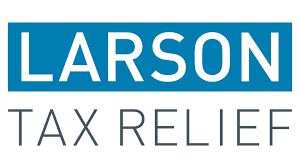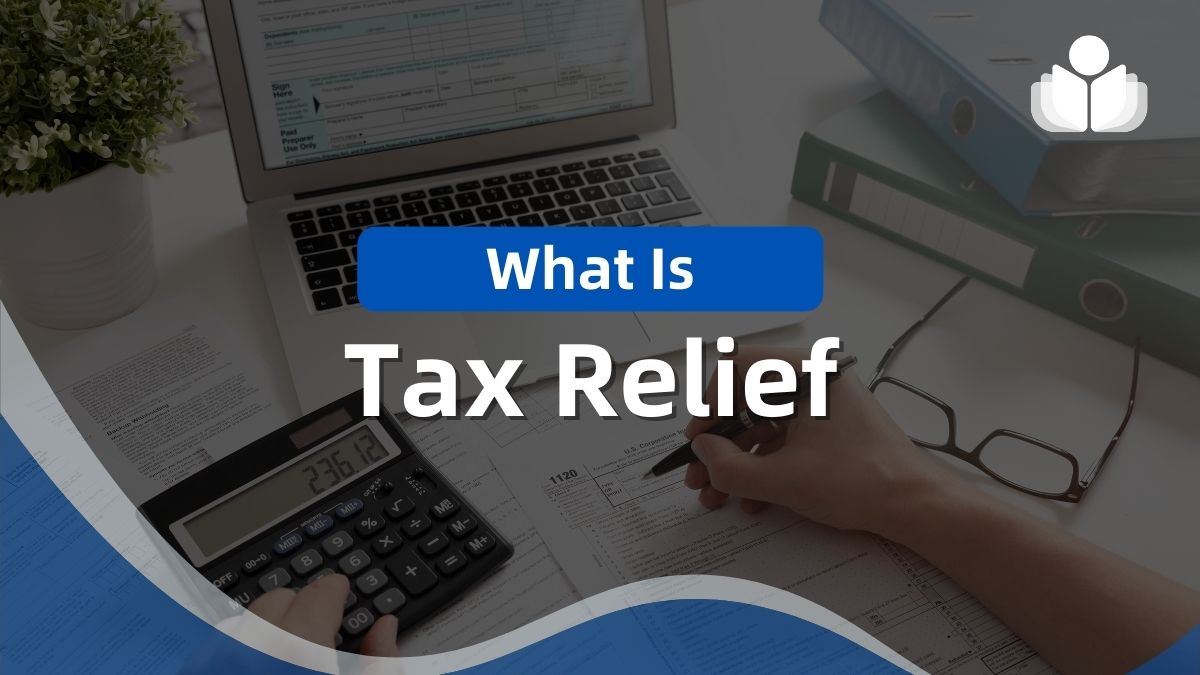Numerous individuals who pay taxes are seeking methods to lessen their tax obligations and take advantage of any feasible tax assistance. If eligible, one viable option for reducing their tax responsibility is to utilize tax relief initiatives.
Tax relief programs, administered by the federal government and certain states, offer a variety of advantages, such as tax credits and decreased penalties. Continue reading to learn more about the various forms of available tax relief and how they can benefit you when filing your taxes.
>> Consider Larson Tax Relief >>
What Is Tax Relief?
Tax relief encompasses a range of government initiatives to alleviate an individual’s tax burden within a specific fiscal year. Your tax burden, also known as your tax liability or tax bill, is the amount you must pay in taxes, calculated based on your total income for the year.
For instance, under the 2023 tax brackets, an individual’s first $11,000 income is subject to a 10% tax rate. Therefore, if you earned $11,000 during the 2023 tax year, your taxes owed would amount to $1,100.
Any income exceeding $11,000 up to $44.725 is taxed at a rate of 12%. So if you earned $15.000 in income during that period and already accounted for the initial example’s $1.100 dues, you would owe an additional sum equaling 12% of the remaining $4.000, which equals approximately $480.
Tax relief takes various forms, such as deductions, credits, or exemptions, all designed with one purpose, lowering your overall taxable responsibility by instructing the IRS not to consider parts of your earnings (deductions and exemptions) or directly reducing payable taxes (tax credits).
The term “tax relief” can also encompass assistance programs offered by the IRS that help individuals manage their outstanding debts by offering settlements below what was initially owed.
How Does Tax Relief Work?
Tax relief serves as a primary mechanism for diminishing or eradicating your tax liability prior to submitting your taxes to the IRS or state tax agency. The approach to achieving this objective varies depending on the specific tax relief alternative.
- Tax deductions: These deductions lower your taxable income, reducing the final tax bill.
- Tax credits: These credits directly decrease your tax liability by a predetermined amount and can sometimes lead to a tax refund if the credit exceeds your tax liability.
- Tax exemptions: Exemptions exclude certain income from being considered taxable, thus preventing an increase in your tax bill. Some exempt income may not be reported on your tax return, while others can be deducted during the filing process, similar to a tax deduction.
- Tax debt relief: These programs, offered by the IRS and state or local governments, assist taxpayers who owe back taxes in managing their debt in a feasible manner and potentially avoiding significant penalties. Unlike deductions, credits, and exemptions, tax debt relief typically becomes relevant after the tax filing deadline has passed.
Types of Tax Relief
As previously stated, various government-backed initiatives and incentives exist that are categorized as “tax relief.”
Tax Deductions
Deductions have the ability to decrease your overall taxable income for the fiscal year, ultimately resulting in a reduced final tax payment. There are two primary methods by which taxpayers can claim deductions. The first involves taking advantage of the standard deduction that’s permitted based on your specific filing status and other qualifying factors. Alternatively, individuals can opt to make itemized deductions on Schedule A of their Form 1040 or 1040-SR.
Standard Tax Deductions
The amount of the standard deduction you can claim is determined by various factors, including your filing status, age, and disability status. If you are 65 years old or older or legally blind by the end of the tax year, these amounts may increase.
For the year 2022, an additional standard deduction of $1,400 was allowed for individuals who are either over 65 or blind ($1,750 if filing as single or head of household). In the 2023 tax year, this additional deduction increased to $1,500 ($1,850 if single or head of household). If you meet both criteria, being over 65 and legally blind, these additional deduction amounts double to $2,800 in 2022 and $3,000 in 2023 (or $3.500 in 2022 and $3.700 in 2023 if filing as single or head of household).
It’s important to note that if someone else claims you as a dependent on their tax return,
the standard deductions work differently for you. For dependents in the year of 2017-18, standard deductions were set at$1150. This includes total earned income plus four hundred dollars whichever is greater.
For dependents on their taxes, the standard deduction will be set at one thousand two hundred fifty dollars along with earned income plus four hundred whichever is higher. You should also be aware that “earned income plus four hundred” cannot exceed your limit based on your filing status (for example, $12’950 for single filers in the year 2017-18).
Itemized Tax Deductions
The majority of taxpayers typically opt for the standard deduction, which reduces your taxable income by a fixed amount. However, for some individuals, itemized deductions have the potential to significantly decrease their taxable income, potentially even placing them in a lower tax bracket.
A common example of itemized deductions includes donations to nonprofit organizations and business expenses incurred by self-employed individuals. Depending on the nature of their work, employees may also be eligible to deduct certain business expenses.
In certain cases, state and local taxes (SALT) can also be used as tax deductions. Examples of these deductions include sales tax or income tax paid throughout the year, as well as real estate and property taxes for homeowners. For individual filers, SALT deductions are capped at $5,000 while married couples filing jointly can claim up to $10,000 in SALT deductions.
It’s important to note that you can only choose one between itemized deductions and the standard deduction in a given tax year. Therefore, it is advisable to opt for itemized deductions only if the total amount you plan on deducting exceeds the standard deduction for that year.
Additional typical itemized deductions comprise:
- Donations to charitable organizations
- State and local taxes (abbreviated as SALT)
- Interest paid on mortgage loans up to $750,000 in secured debt (inclusive of discount points)
- Out-of-pocket medical and dental expenses not reimbursed
- Interest on student loans
- Specific losses incurred from gambling
>> Consider Larson Tax Relief for Tax Relief Service >>
Tax Credits
Tax credits differ from tax deductions in that they directly decrease the total amount of taxes you owe rather than just lowering your taxable income. In other words, deductions reduce the portion of your income used to calculate your tax bill, while credits directly reduce the actual amount of taxes you have to pay.
Government programs like the child tax credit and earned income tax credit are examples of initiatives aimed at lessening taxpayers’ overall tax burden. Another example is the Recovery Rebate Credit, which allows individuals who didn’t receive or claim their full Economic Impact Payments (also known as stimulus checks) during the COVID-19 pandemic to lower their total owed taxes potentially.
Below are several prevalent tax credits available for taxpayers to utilize:
- Credit for child and dependent care expenses
- Earned income tax credit (EITC)
- Credit for residential energy-efficient property
Tax Exemptions
Tax exemptions, also known as tax exclusions, refer to types of income that aren’t subject to taxation and can effectively reduce your overall taxable income, resulting in a lower tax liability. Examples of tax-exempt sources include child support payments, employer-paid health insurance premiums, and life insurance proceeds.
One notable exemption is the “gift tax exclusion,” which permits you to give money or assets to friends or family members without incurring any taxes. In the 2022 tax year, you have the ability to gift up to $16,000 per recipient without being taxed by the IRS.
While the IRS website offers information on various exemptions for individuals and businesses, it may take a lot of work to locate all relevant details as they are dispersed across multiple pages. Here’s a brief compilation of some exempted items:
- Income received as child support payments
- Insurance premiums for health coverage provided by employers
- Payouts from life insurance policies upon death
- Exclusion from tax for combat service
- Exclusion from tax for foreign income earned
- Profits from the sale of a home (limited to $250,000)
Tax Debt Relief Programs
If you find yourself in a situation where you owe back taxes, don’t worry. The IRS provides various alternatives for individuals to settle their tax debt without having to make one large payment that may be challenging to afford all at once.
These options for tax debt relief encompass a range of possibilities, such as payment plans, forgiveness of penalties, and even the suspension of collection efforts.
While it’s important to note that the IRS only has authority over federal taxes, many state and local governments have implemented programs similar to those offered by the IRS.
- Offers in compromise (OIC): An OIC provides an opportunity to settle your tax debt for an amount less than the full balance owed. The IRS evaluates various factors including your ability to pay, income, expenses, and asset equity to determine eligibility. As it allows for payment of less than the total owed, it is among the less frequently offered options for tax debt relief.
- Innocent spouse relief: If errors are made by your current or former spouse when filing taxes, you may qualify for innocent spouse relief. This relief option exempts you from penalties resulting from your spouse’s filing mistakes. However, the IRS will consider this option only if it determines that you have no reasonable knowledge of the errors.
- Installment agreement: These agreements enable you to distribute your tax payments over time if you cannot afford to pay the full amount in a single payment. There are no specific prerequisites for applying for this relief option, but online application is only available for amounts up to $50,000 (for long-term agreements) or $100,000 (for short-term agreements).
- Penalty abatement: Also referred to as “first-time penalty abatement,” this option is typically used to waive minor tax penalties, such as missing a filing deadline or failing to pay a single tax bill. To be eligible for penalty abatement, you must have a penalty-free record for three years and have filed your current taxes or requested an extension.
- Currently not collectible (CNC) status: CNC status indicates that the IRS has determined you are unable to pay the taxes owed and will only pursue collection efforts once you are financially capable of doing so. If granted CNC status, the IRS reviews your financial situation annually until you can repay your debt.
>> Check Out Larson Tax Relief >>
Tax Relief if You Are Currently Behind on Tax Payments
If you haven’t yet paid your taxes or have outstanding tax payments from previous years, alternative methods of tax assistance could potentially be beneficial. You can either fully repay your debt gradually over time or reach a settlement for less than the total amount owed. Take a look at the available options listed below.
Fresh Start Program
Fresh Start is a program created by the IRS specifically for taxpayers who are falling behind on their tax payments. This program provides an opportunity for individuals to submit an Offer in Compromise, allowing them to settle their debt for less than the full amount owed. Accepting these offers by the IRS depends on various factors such as income, assets, and household expenses.
Once your offer is approved, you’ll have two payment options. You can choose to make a lump sum payment upfront that constitutes at least 20% of the total offer amount. Afterward, you’ll be required to pay off the remaining balance within five months. You can also opt to make a single payment together with your offer and then gradually pay off the outstanding balance over a period ranging from six months up to two years.
Note that Offers in Compromise are generally challenging to obtain approval for; however, there’s some assistance available from the IRS in determining whether this option may be applicable in your particular situation through their pre-qualifier tool. To begin this process and apply for Fresh Start benefits under this program, it is necessary to complete Form 656-B.
If filling out a lengthy 32-page document like Form 656-B feels overwhelming or stressful for you personally, consider hiring a reputable tax relief company that specializes in assisting taxpayers with navigating these complexities. These professionals can work directly with the IRS on your behalf and help determine an appropriate amount for your Offer in Compromise submission.
Other Tax Debt Relief Services
Tax Attorneys
Tax attorneys are experts in dealing with intricate tax codes and legal matters concerning taxes for their clients. They have the know-how to handle tax-related problems across different states, such as when someone owns multiple businesses, and can effectively prevent or resolve tax penalties that may lead to criminal charges. Additionally, tax attorneys offer assistance with filing taxes for their clients.
Tax Relief Companies
Tax relief companies enlist various tax experts, including accountants, lawyers, and IRS-certified agents, to assist in determining the most suitable solution for your tax debt predicament.
While it is possible to negotiate directly with the IRS on your own, these companies leverage their extensive knowledge and expertise in tax matters to guide you through complex tax debt situations.
If your tax debt is relatively uncomplicated, it is more cost-effective for you to reach out directly to the IRS without engaging in unnecessary services that could save you hundreds or even thousands of dollars. Below are our top recommendations for tax relief services:

Larson Tax Relief offers comprehensive business tax solutions, such as resolving payroll and federal tax problems, addressing disputes with revenue officers, and tackling worker classification concerns. This makes them an ideal option for businesses seeking assistance with their tax debt.
Larson Tax Relief covers many services, including personal IRS debt relief and corporate tax support, and helps delay or avoid bank levies. With their expertise in various areas of taxation, they are well-equipped to assist individuals and businesses.

Anthem Tax Services assists with IRS tax debt relief and corporate tax preparation. The company is dedicated to helping individuals apply for various IRS tax debt relief programs, such as offers in compromise (OIC), innocent spouse relief, and achieving a “currently not collectible” status.
What sets Anthem apart from its competitors is its exceptional money-back guarantee. Anthem will refund all of your money if they cannot secure any form of resolution from the IRS, whether it be a reduction in payment amounts or complete debt forgiveness.
However, it’s important to remember that this guarantee doesn’t cover the initial investigation fee. This fee typically starts at $350 and may vary depending on the specifics of your case.

Community Tax provides complimentary consultations and reasonably priced investigation fees, which fall from $295 to $500.
Community Tax Relief’s primary focus is resolving IRS tax debt, but it also offers some assistance with state taxes. Like other similar companies, Community Tax handles various applications, including installment agreements and offers in compromise. However, it doesn’t provide innocent spouse relief.
The company caters to customers with tax debt starting at $10,000. Their money-back guarantee duration varies from state to state and can be between three and 10 days. Furthermore, they offer a full refund if your issues still need to be resolved satisfactorily.
What Is Tax Relief? – FAQs
Summary
Tax relief encompasses various government programs and initiatives aimed at assisting taxpayers in reducing or eliminating their tax liabilities. Examples of tax relief include the child tax credit, the option to itemize deductions on one’s tax return, and payment plans for overdue taxes.
Larson, a reputable company specializing in tax relief services, can help you determine which tax credits, deductions, and exemptions you can claim when filing your taxes. Alternatively, if you prefer to educate yourself on the subject, IRS.gov provides an Interactive Tax Assistant tool that offers answers to numerous specific taxation queries.
 Sections of this topic
Sections of this topic
















